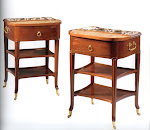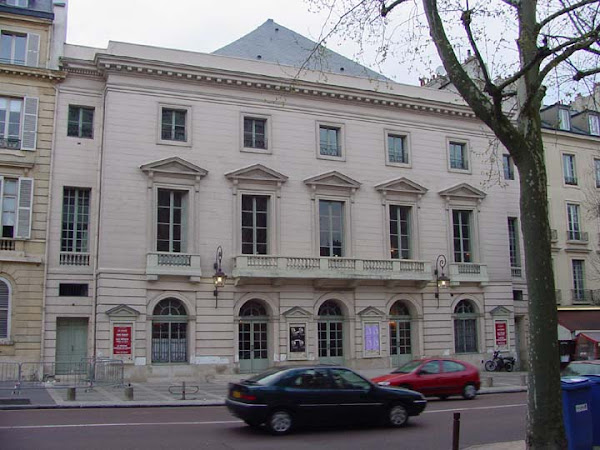Louis Masreliez was born and formally christened Adrien Louis Masreliez (1748 –
19 March 1810). He was a Swedish painter and interior designer. Masreliez was born
in Paris and came to Sweden in 1753. He began his education at Ritakademien
(Drawing Academy) at the age of 10. Since the academy did not teach painting,
he studied at Lorens Gottman's workshop. In 1769 he was given a study grant
which he used to travel to Paris and Bologna to study. He left Bologna in 1773
to live in Paris for eight years. He then returned to Sweden in 1782 to become
ledamot of the Royal Swedish Academy of Arts. The following year he was made a
professor of art history. He became rector of the Academy in 1802 and director
in 1805. His work is represented in the Swedish National Museum of Fine Arts,
the Gothenburg Museum of Art, and the Royal Palace. Among his works are: The
interior of Gustav III's Pavilion at Haga Park in Solna; The interior of
Tullgarn Palace; The altar paintings of Maria Magdalena church in Stockholm,
Romfartuna church near Västerås in Västmanland and the S. Stefano in Alexandria. The
perfectly restored suite of rooms in Salviigränd in the Old Town in Stockholm,
created for the tradesman and bachelor Wilhelm Schwardz in 1795 is the subject of this blog essay. It is a little known Neoclassical masterpiece.
This is a portrait of Louis Masreliez below.
But today I thought it would be interesting to take a glimpse of this apartment in Gamla Stan ( the old historic quarter) of Stockholm designed by Masreliez for a private client Wilhelm Schvardz, a Stockholm merchant. The work was finished in 1795. Today the apartment is privately owned by a Swedish insurance company who makes it nearly hopelessly inaccessible. When in Stockholm, I was kindly given a nice colour booklet produced by the insurance company and lavishly illustrated.The photos below are scanned from this booklet.
Below are two views of the drawing room... Note the prominence of grisaille decoration on a gold ground on the wall panels. This is similar to the decorative treatments of the Mirrored Hall at Haga Pavilion.
Below are two views of the dining room... Note the lovely painted ceiling and the typically stylish Swedish chandelier.
The last illustration depicts the designer's treatment of his client's private intimate bedroom.

















No comments:
Post a Comment
Note: Only a member of this blog may post a comment.